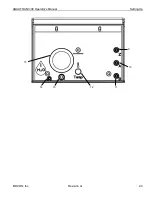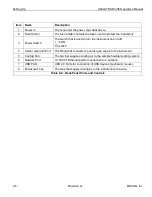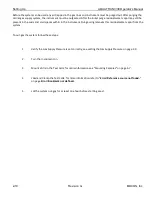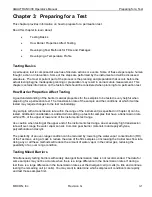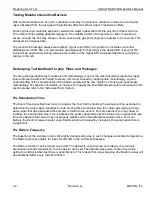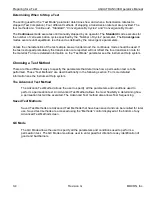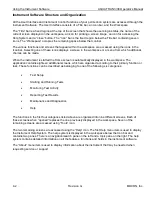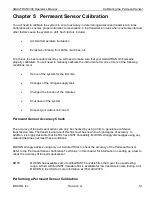
Preparing for a Test
AQUATRAN 3/38 Operator’s Manual
3-2
Revision G
MOCON, Inc.
Testing Moisture Sensitive Barriers
With some materials such as nylon, cellophane and ethyl vinyl alcohol, variations in the amount of water
vapor absorbed from the test gas will significantly affect the Water Vapor Transmission Rate.
Some hydroscopic materials expand or swell when water is absorbed into the polymer or fiber structure.
The extent of this swelling depends largely on the solubility factors of the polymer or fiber. If swelling is
severe enough, the film may droop or dome, causing the gas ports (ingress or egress) to be covered. This
will result in erroneous data.
To prevent this blockage, always precondition hygroscopic films in a hydrator or container over either
distilled water (100% RH) or a salt solution (see Appendix F) that will give the desired RH. If several RH
levels will be used during testing, always precondition at the highest RH anticipated before mounting the
sample in the cell.
Developing Test Methods for your Films and Packages
Choosing the appropriate test conditions and methodology is one of the most important preparatory tasks.
Inaccurate test results and “Failed” tests are commonly caused by inappropriate methodology. A good
understanding of the characteristics of the barrier sample will be very helpful in choosing an appropriate
methodology. For specific information on how to set or adjust the Test Method parameters discussed in this
section please refer to the Instrument Help System.
The Examination Time
The Exam Times specifies how long (in minutes) the Test Cell (containing the sample) will be examined to
determine the water vapor transmission rate. During this examination time the carrier gas (along with any
water vapor that has permeated the sample) is routed to the sensor. For some barriers you may need to
increase the examination time. This is because the sensor approaches its final value at an exponential rate.
For some barriers the sensor may not properly stabilize within the default examination time. For most
barriers the small increase in water vapor transmission rate caused by increasing the examination time is
insignificant.
The ReZero Frequency
The baseline of the instrument can shift slightly during testing due to such changes as ambient temperature.
The ReZero process adjusts for these small shifts in the instrument baseline.
The ReZero function can be turned on and off. The default is on with a new zero taken every two cell
examination periods (equivalent) to one pass for each cell. The default values were chosen to provide
optimum conditions when testing very good barriers. This means that a new baseline (the ReZero value) will
be established after every cell examination.






